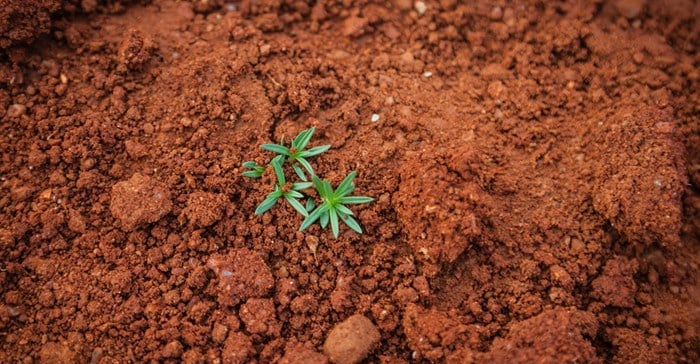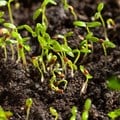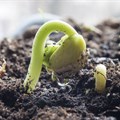Studies by scientists have shown that soil health in South Africa is declining more and more every year. Looking at specific soil biological indicators that are linked to root health and nutrient mineralisation in around 10,000 soil samples over the past five years, it has been found that more than 70% have not had optimal soil biological life.
Measuring soil health is a critical component for sustainable farming. Traditionally, South African maize farmers would plant their crops in October. Now, due to later rainfall, maize is often planted months later, resulting in later harvests. This raises challenges such as abiotic and biotic stresses, not normally a consideration for maize farmers, but these are not normal times.
In the Northern Cape, maize stubble, which ideally left to decompose and enrich the soil, has to be burned in some cases so that fields are ready in time for the next crop. Elsewhere in South Africa, farmers must somehow generate viable yields during drought conditions that can last for years.
This is the real face of climate change, the overwhelming existential challenge facing humans today. We now number more than 7,5 billion people, all of whom must be fed and sustained in a climate that is increasingly erratic and unpredictable.
At the frontlines of this great battle to feed the population are our farmers. They are being asked to achieve something almost miraculous; produce more food, using similar inputs, under climatic constraints. The resource from which they must do this is an extremely precious asset – our soil.
,
The farmers’ challenge boils down to nutrient and water use efficiency and sustainable soil usage while minimising their impact on people and the environment. However, soils are often stressed and depleted following decades, even centuries of agricultural use.
Expanding the Green Revolution
We need to use science to find innovative solutions to enhance agricultural productivity in line with the demands of our ever-growing population, despite climate change making the current challenge even more complex.
This era has been called the Second Green Revolution. The first used crop selection and chemical fertilisers to enhance yields and preserve food security. The second revolution must do the same, but sustainably in harsher weather with poorer soils.
The Second Green Revolution employs greener products like biostimulants, biofertilisers and bio-control to improve soil fertility. Crop rotation and intercropping – where crops are grown together, to mimic natural diversity – are other methods of the Second Green Revolution.
Models have also been created to measure soil-water content and biostimulants developed to improve water and nutrient use. Breakthrough insights have found that microbial inoculants and seaweed extracts help plants cope with drought stress more efficiently. These breakthroughs will continue as science begins solving agricultural needs of the future.
Balancing soil health
Soil comprises nutrient characteristics; physical characteristics like soil texture and water holding capacity; and biological components such as the rhizosphere and the root microbiome. Soil health is about balancing these components. Poor soil drainage can lead to biological disease as a secondary problem and all these components are interlinked and interdependent. Without the right chemical composition, a healthy root system is impossible. Fine tuning the interrelation of these three components is what ensures optimal nutrient- and water use.
Feeding the world sustainably will require a balance between the chemical and biological components of farming, which necessitates intimate collaboration between biotechnologists and agronomists.
A further complication is that soil varies widely across regions, climatic zones, and even within the same farm. Modern biological agricultural products such as biostimulants, humic acids, fulvic acids, seaweed extracts, microbes, amino acids and vitamins, as well as inorganic fertilisers, are designed to work in combinations specific to particular soils.
Through ongoing testing and analysis, soil scientists have built a database of our numerous soil types, which are analysed and recommendations for precision-farming applications for farmers are made. This includes adding the correct fertiliser, in the right proportions, at the right time.
Feeding the world sustainably will require a balance between the chemical and biological components of farming, necessitating close collaboration between biotechnologists and agronomists. Agronomists can highlight practical farming issues and dovetail them with chemical insights from biotechnologists. This requires extensive laboratory testing, but also time on the farm, and robust conversations with farmers who ultimately work the land.
Preserving arable land
Various specialists are stewards of the land, devising and refining guidelines for methods, approaches and the responsible use of fertilisers and chemical nutrients. Bio-control products have been developed to replace or complement traditional, potentially harmful agro-chemicals in controlling insects, mites and fungus, in ways that leave extremely low residues, degrade naturally and leave no by-products.
These product innovations are essential for preserving South Africa’s arable land, which is under pressure and shrinking due to declining soil fertility, mining activity and climate change. We can achieve higher yields, even under constraints like drought, but must rehabilitate our soil at the same time.
The dependency of humanity’s food requirements and science’s ability to meet them will continue, perhaps until there is a fundamental change in mindset in the understanding that we cannot deplete our resources faster than they can regenerate.
Building soil knowledge
Soil is arguably the most complex ecosystem, and – excuse the pun – we have barely begun to scratch the surface in understanding it. There are billions of different microbes in a teaspoon of soil and to fully understand the role that each of them plays would take lifetimes.
However, we must continue to build our soil knowledge, if we are to overcome decreasing soil fertility. It is a multifaceted problem, compounded by climate change, chemical-resistant crops and pests, desertification and population growth. In solving this problem, science remains our most indispensable ally.



































